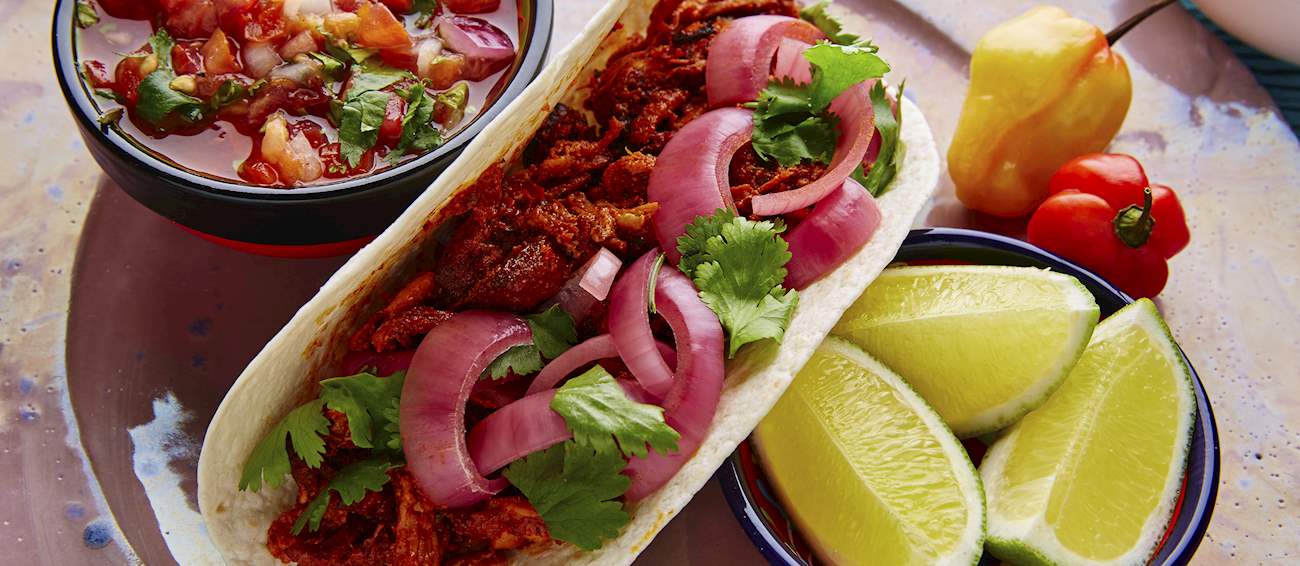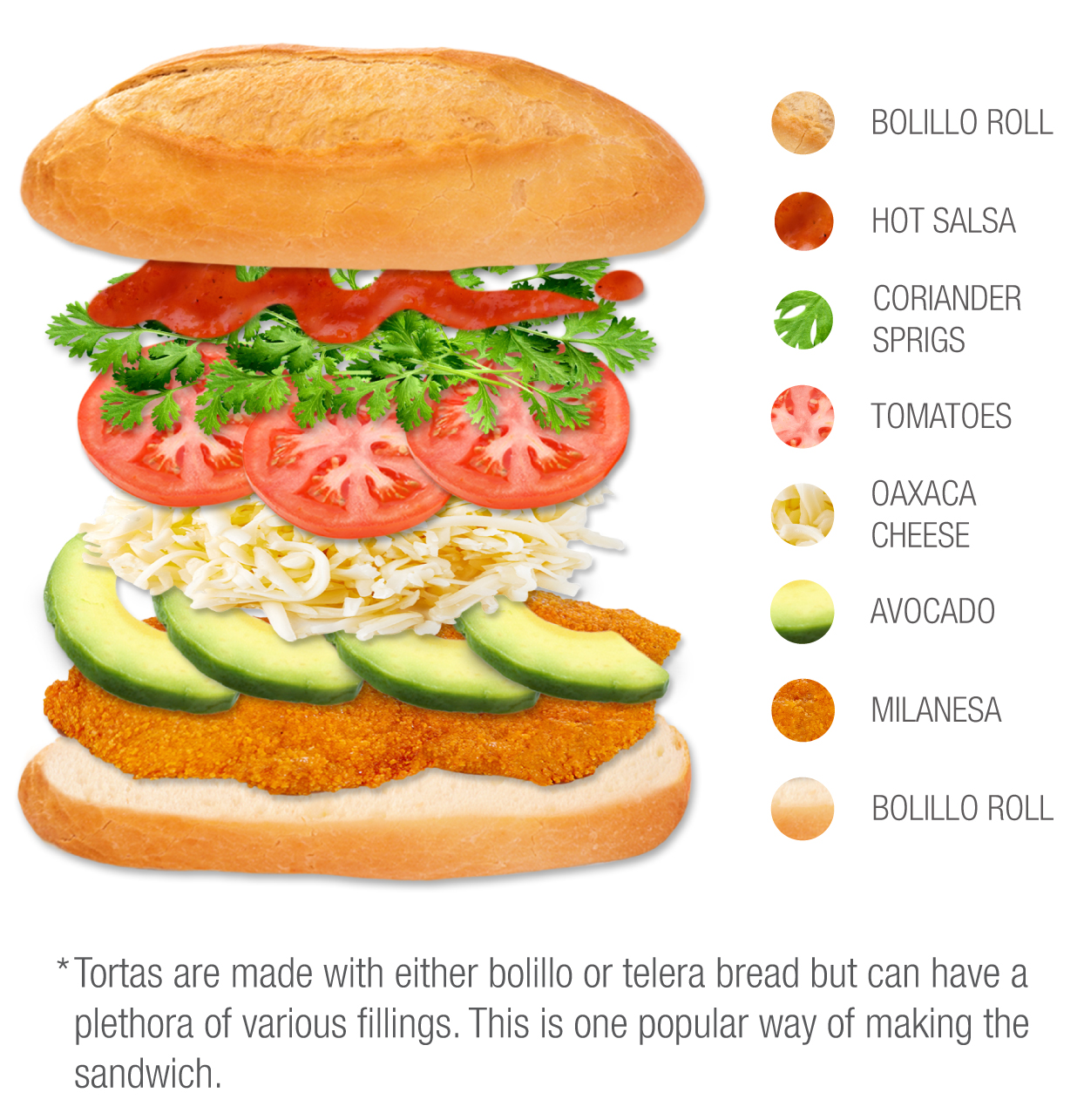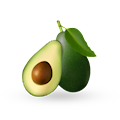Mexican tortas are luscious traditional sandwiches filled with delicious, mostly authentic Mexican ingredients. They are a unique Mexican creation, considering they are served in bread rolls, an ingredient that is not so often associated with Mexico.
There are two bread varieties usually incorporated in tortas, the traditional French influenced bolillos, and the similar round teleras, which are an authentic Mexican product from Puebla. The rolls are sliced horizontally, buttered, and stuffed with the most popular Mexican ingredients such as beans, avocados, ham, queso, jalapeños, and a myriad of other typical Mexican dishes like fried beef or chicken, shredded beef, roasted pork, and even tamales.
VARIATIONS OF Tortas
Cochinita pibil is a Mexican pork dish originating from Yucatan. Pork is marinated in a combination of annatto paste, bitter orange juice, and garlic. It is slowly baked and then shredded and served on tortillas, tacos, or on its own with shallots, pickled onions, salsa, and various roasted vegetables.
Cochinita pibil is characterized by the red color of the meat, imparted by the annatto seeds from the marinade. Originally, pork was wrapped in banana leaves prior to baking, but today a foil or any other suitable wrapping can be used instead. Since cochinita means baby pig, and pibil means buried or underground, it acts as a proof that the original recipe used a whole suckling pig that was buried in a pit for roasting.
MAIN INGREDIENTS
Tacos are the national dish of Mexico, dating back to the Mexican silver mines of the 18th century, when the word taco referred to gunpowder that was wrapped in a piece of paper and inserted into rocks. It was used to excavate the precious ore from mines and was called tacos de minero or miner's tacos. Today, the word is widely known to signify the leading street food and fast food item in Mexico – thin, flat griddle-baked tortillas topped with numerous fillings, folded and eaten without any utensils.
A taco is basically anything eaten on a soft tortilla, and there is an infinite variety of them. In Sonora, in the north of Mexico, they eat the classic carne asada - thinly sliced meat grilled over coals and topped with salsa, onions, guacamole, and a lime wedge.
VARIATIONS OF Tacos
Tacos al pastor is a Mexican dish consisting of thin slices of shaved pork from a rotating spit, placed on a tortilla and topped with onions, chopped coriander, pineapple chunks, chili, and salsa. The dish evolved from the Lebanese culinary traditions that arrived in Mexico in the late 19th century along with numerous immigrants.
It stems from the popular shawarma, but the Mexicans changed the spices and substituted lamb with pork. Tacos al pastor originated in the city of Puebla, and their name is translated to shepherd's style tacos. However, the addition of pineapple to the dish still remains a mystery to be solved.
Salbute is a deep-fried tortilla dish with Mayan influences, originating from the Yucatán peninsula. These tortillas are typically topped with chicken, turkey, lime juice, tomatoes, lettuce, avocados, and red onions. They are also a staple food in Belize.
Salbutes are traditionally prepared and consumed in the evening, when groups of friends and families go outside to have a bite. The tortillas are often served at panucherias – fast food joints which also sell tostadas and panuchos.
MAIN INGREDIENTS
The first, original plate of nachos consisting of tortilla chips, melted cheese, and jalapeños was made for a group of military officers' wives in 1943 in Piedras Negras, Mexico. The ladies of the US Army Air Force base went over to a restaurant in the city, called the Victory Club.
Its maitre d', Ignacio "Nacho" Anaya couldn't find the cook, so he combined some readily available ingredients for the ladies and presented them with canapes of tortilla chips, cheese, and jalapeño peppers. Nachos were created, and Anaya became the restaurant's head chef a few years later.
VARIATIONS OF Nachos
Sopes are small, thick disks of fried corn dough under a topping that usually consists of beans, meat, cheese, and a sauce. Every state in Mexico makes its own version of the dish and calls it differently. In Puebla, it's pellizcada (from pellizcar, meaning to pinch), in Veracruz a picada, in Yucatán a panucho, and in Oaxaca, a sope is called memela or garnacha.
It is characterized by its pinched edges that form a border which holds the toppings. The dish is sometimes referred to as the Mexican pizza, as the simplest form of explanation about what sope really is. These savory snacks are served either as an appetizer, as a main dish, for lunch or for dinner.
Gringas is a typical Mexican dish made with flour tortillas filled with al pastor marinated pork meat, cheese, and, most commonly, pineapple slices, although onions, chili sauce, and coriander can all be added to the dish according to the customer's preference.
The combination of these ingredients is then grilled in the same manner as a quesadilla. The tortillas are usually folded in half and consumed like a taco. The name of the dish, a feminine form of gringo, is believed to have come from the idea that flour tortillas are more popular than corn tortillas north of the Mexican border.
Tamal is a Mexican dish dating back to the Aztecs, consisting of corn masa dough with a filling that can be either savory or sweet, steamed and wrapped in corn husks, leaves, or banana leaves. The tamales are traditionally accompanied by atole, a masa drink.
Even though it is common for Mexican food to be served with a variety of sauces and salsas, tamales are the exception because they are usually eaten plain and simple without any sauces, although it is not a rule set in stone. One of the first records of tamales dates back to the 1550s when the Spaniards were served the dish by the Aztecs who made them with beans, meat, and chiles.












